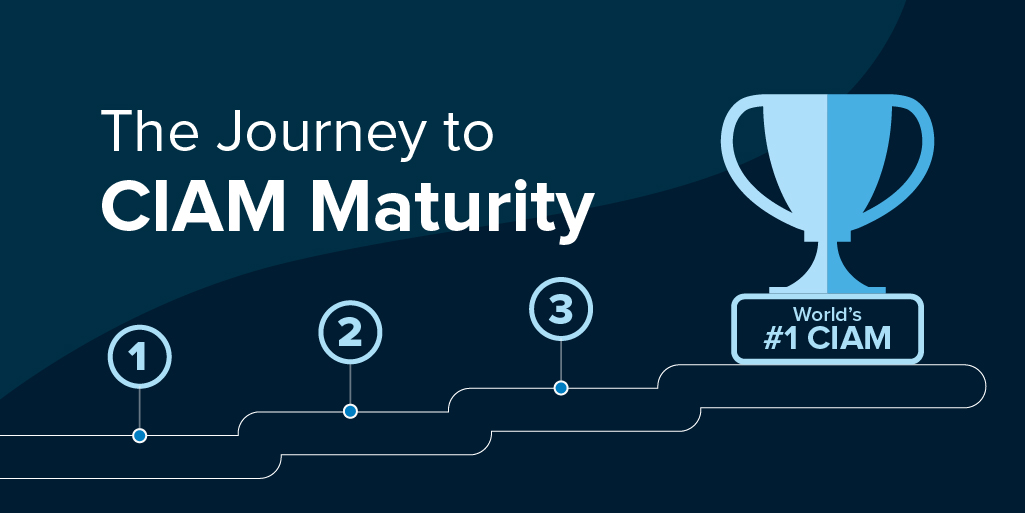The Burdens of Maintaining Homegrown Customer Identity
The best digital experiences may appear effortless from the outside, but keeping web and mobile apps and portals at a market-leading standard takes a lot of work. Your development teams are likely juggling multiple products, brands, and channels, all with their own set of requirements and varying degrees of complexity. As the front door to your digital presence, your customer identity and access management (CIAM) service—covering common end-user flows such as account sign-up, login, and password resets—is an integral part of the overall customer experience (CX), but it’s just one of the many items competing for your developers’ time.
Getting CIAM right is critical, but with so much to build and maintain, it can be a time-consuming and costly ongoing journey—one that requires constantly implementing new features and capabilities to stay on top of ever-evolving customer needs, security standards, and regulatory demands. And yet, many companies still wrongly assume that rolling out identity is a simple, one-and-done process.
Whether you’ve already taken a build-it-yourself approach or are just getting started, this blog post illuminates some of the key factors, risks, and costs to consider when thinking about how to maintain and evolve your customer identity service.
Key considerations for your customer identity strategy
As customer needs evolve and security threats become more sophisticated, new requirements, risks, and opportunities for your customer identity layer will arise. By keeping the following factors in mind, your team can ensure that your CIAM capabilities are on the same course as the ever-changing digital landscape.
- To stay on top of evolving customer requirements, look beyond your initial goals for basic identity services such as credential management, authentication, and single sign-on (SSO). It’s crucial to make an ongoing effort to meet end-users’ demands for enhanced usability, convenience, self-service support, as well as data privacy and security.
- Outdated or hard-coded identity magnifies the risks of exposure to security threats. Broken authentication, broken access controls, sensitive data exposure, and insufficient logging and monitoring capacities consistently rank among the Open Web Application Security Project’s top ten security risks. To help mitigate these risks, keep on top of the latest security vulnerabilities and attacks, as well as new consumer regulations and privacy standards such as the GDPR and CCPA.
- Every CX improvement you make helps your app to stand out in a crowded market. With this in mind, it’s always worth looking for opportunities that can enhance your digital products, such as modern login capabilities (think passwordless access, biometrics, and social login support) and seamless omni-channel support (think web, mobile, and IoT) that reduce friction and increase engagement.
The hidden costs of maintaining homegrown CIAM
As you put together your customer identity strategy, it’s also important to consider the ongoing costs to manage and future-proof the solution once it’s built. With a homegrown approach, significant budget, staffing, and expertise must be secured far beyond the initial deployment stage. Over time, however, the costs and resources needed to maintain a top-notch service tend to increase in unpredictable ways. Let’s dig into some of the key cost components of maintaining CIAM that are often overlooked.
Core features and innovations
Consumer behaviors and expectations are changing fast. To stay relevant, competitive, and up-to-date, companies need to keep an eye on the horizon for innovation opportunities and continually build these into their customer identity service. Your CIAM solution must be able to keep pace with new, fast-changing requirements and trends that can be hard to predict and are driven by external factors—such as user needs, regulator demands, and more—or it will put the business at risk of falling behind the competition.
Uptime and availability
The effort required to ensure service uptime and high availability really is essential—any outage you experience could devastate your business. You want to minimize the risk of encountering service disruptions as much as possible, as even one bad experience can seriously damage customer trust and brand perception. This often requires maintaining double or triple redundancy in your datacenter or in collaboration with an infrastructure-as-a-service (IaaS) provider, while ensuring seamless upgrades and patching to the service without any interruptions.
Scalable infrastructure
Handling peak user traffic and workloads is critical as you grow your digital business. As your apps scale for an increasing customer base, you’ll need to up your investment in backend infrastructure to make sure that users can always log in quickly and seamlessly, regardless of application load. Achieving a scalable identity service is heavy on resources and maintenance work whether you’re relying on in-house hardware and servers or using an IaaS provider for additional processing power.
Security and compliance
Being conscious of security risks while building is a start, but with cyber threats becoming more ubiquitous, the risk level of your digital properties will likely increase over time. Preventing, identifying, and countering security threats and issues at every infrastructural layer is time-consuming and resource-intensive. The reality is that security is non-negotiable, and your team will be left chasing an ever-accelerating target.
As the costs of providing an innovative, reliable, secure, and scalable identity service with an in-house approach become insurmountable, it’s time to rethink your strategy.
What modern CIAM offers
A modern, cloud-based CIAM solution can help you avoid the costs and risks described above. By offloading customer identity management to a third-party vendor like Okta, you can focus your energy where it matters most and make the following improvements to your customer apps and web portals:
- Frictionless user experiences: Achieve delightful, secure CX with little to no custom code, thanks to customizable self-registration screens, passwordless experiences, SSO, and social login.
- Enterprise-level security and scalability: Let security experts manage your infrastructure to minimize vulnerabilities and outside threats, so that you can focus on your core business. Scale with confidence with 99.99% availability SLA, and HIPAA, FedRAMP, GDPR, and PSD2-compliant service.
- Faster time-to-market: Accelerate your time-to-market with repeatable, reusable identity components to quickly launch new apps, features, and innovations.
- Centralized management: Give your team an intuitive and frictionless interface for managing the identity and security settings of your digital properties.
Read our whitepaper to better understand the challenges of homegrown customer identity—and how modern CIAM can solve them.


